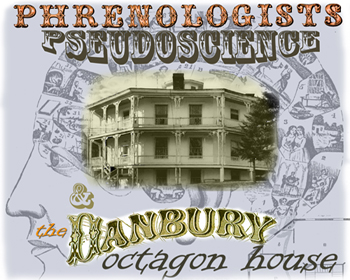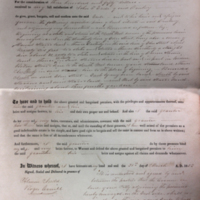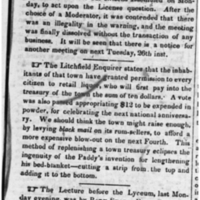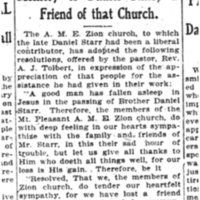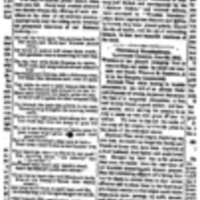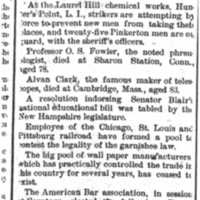Danbury's Octagon House
In 1853, a steamfitter by the name of John T. Earl purchased land off Elm Street to build a home for he and his wife Deborah Starr Earle. Some sources credit Deborah Earle's uncle, Rory Starr, with construction of the Earles' house but Rory Starr had died eight years prior to the house's construction and three years prior to the publication of Fowler's A Home For All which was the source for its design. Rory Starr had been a builder of local renown as well as a part time preacher and lecturer on self-improvement. The gist of Rory Starr's philosophy appears to be in line with Fowler's regarding self-improvement and health, but likely Deborah's brothers Frederick and Daniel (who built his house - still standing - next door) built the house.
Elm Street contained few other houses at the time of construction and Earle's plot just short of the crest of a hill would have had a clear view of Danbury's Main Street below.
"...every New England state has many octagonals but none finer than the great old decaying structure at Danbury, Connecticut, which was constructed with almost literal exactness according to the directions given in A Home For All." - The Hudson By Carl Carmer, Edward J. McLaughlin. Fordham University Press, 1989. pg 207.
The extent of the connection John and Deborah Earle had to the philosophies of Orson Fowler is unknown, but Deborah's family's connection to the ideas of self-improvement then actively propagated in Danbury by the Fowlers may have led them to consider the Home For All design. The Earles' connection was strong enough that they followed Fowler's design more closely than others around New England who also were swept up in this brief fad.
Deborah Earle's brother Frederick, who may have had a hand in the Octagon House's construction was killed in the Civil War.
John T. Earl lived until 1876 and the house passed on to his wife Deborah and their children. Deborah stayed in the house (by the 1880s listed as 21 Spring Street) for many years. Deborah's brother Daniel whose home was constructed in the late 1850s remained her neighbor at 23 Spring Street.
Daniel Starr lived until 1909 . Upon his death he made a significant gift to the African Methodist Episcopal Zion Church in Danbury. The Butler Family were on the board of trustees at the AME Zion Church and Katherine Butler was in WestConn's (then the Danbury Normal School) first cohort of students.
By the time Starr passed away, interest in phrenology had faded and so did the fortunes of O.S. Fowler. From The Hudson by Carl Cramer: "Orson Fowler’s happy world seems to have dropped out suddenly and in a single piece. Just as careful scientists turned on phrenology and savagely discredited it, the grout walls of the cesspool in the big Hudson Valley octagon allowed a seepage into the well. Typhoid raged through the house and a large number of distinguished guests were made desperately ill. Those who escaped death fled in terror. Discouraged, Fowler sold the house. It became a boys’ school, then a boardinghouse. It changed hands more than thirty times in rapid succession. In 1897 it was declared unsafe by fishkill authorities and destroyed by dynamite... Orson Fowler, still believing in phrenology and his housing theories and fighting for them a brave, losing battle, finally retired to a small farm near Sharon Station, on the New York and Connecticut border, where in 1887 he died." pg 207
